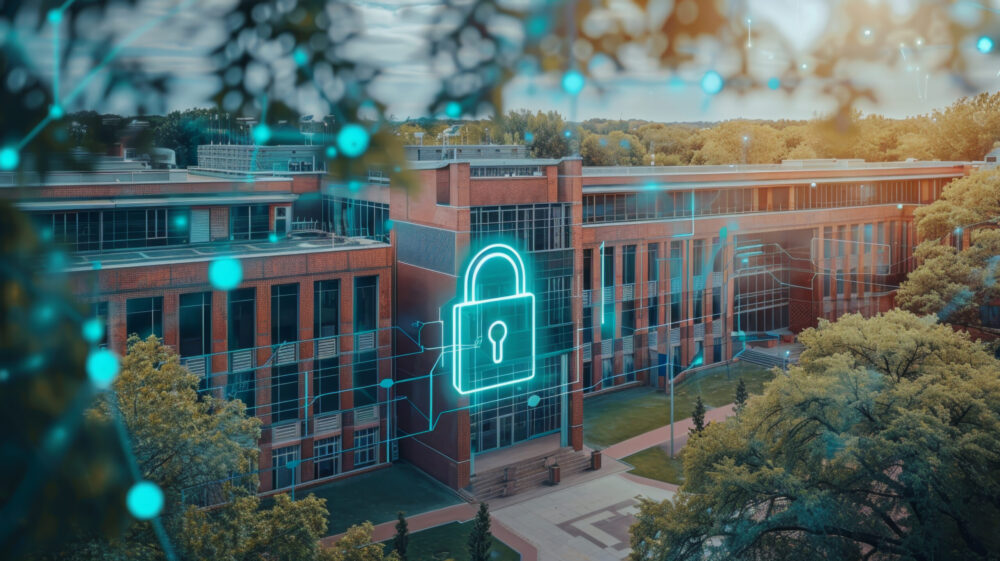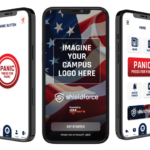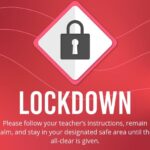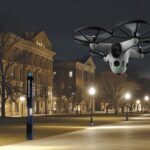Today’s K-12 environment demands that security is foremost in the minds of school administrators, teachers, parents and students. Recent events in the news and past tragedies have left many feeling frightened and overwhelmed, prompting a desire to take action to prevent such tragedies in their own communities. However, there is often confusion about the most effective ways to ensure campus or district safety.
In many cases, there is pressure to act — to “just do something,” which may lead to unforeseen consequences or issues like violations of life safety code or non-compliance with the Americans with Disabilities Act (ADA). Such approaches can result in systems that don’t integrate well, solutions that fail to meet security standards, or overly complex setups.
Related Article: How College Mobile Credentials Enhance Inclusion, Retention, and Safety
Additionally, fear-driven marketing can promote solutions that don’t address all potential risks. School security measures might be implemented in a silo, creating gaps in the overall strategy. This often also results in large expenditures aimed at addressing a potential threat or vulnerability that may be unlikely to occur, while neglecting to address threats or vulnerabilities that are more likely to happen.
Planning for safety and security enhancements in schools can be a challenging undertaking when presented with the countless options and opportunities available to schools. Having a clear framework is crucial to provide effective solutions. By using a systems-based approach to plan and address school safety and security solutions, reaching and implementing a solution unique to your campus needs can be achievable. While a systems-based approach isn’t a quick-fix process, understanding it may help reduce confusion and alleviate the pressure to “just do something.”
What Is the Systems-Based Approach to School Security Planning?
Creating a shared understanding of safety and security is essential. Although these terms are often used interchangeably, they are different. Security involves external measures, while safety encompasses an internal feeling. Both are needed.
- Security is something that is external to the individual. It includes the protective physical, emotional and environmental measures implemented in conjunction with training, policies, procedures and mental health programs/social and emotional learning.
- Safety, on the other hand, can be described as something more internal and personal, something felt by an individual, including the perception of being free from harm or danger. Simply put, safety occurs at the intersection of physical security, policies and procedures and mental health initiatives—all these things converge so that individuals feel safe.
With this in mind, we can begin to address creating a systems-based approach for security planning. There are three categories in planning for security, each with different aims and activities.
- Prevention with the goal of reducing the number of threats and/or increasing the probability of detection of threats. Examples include threat assessment/reporting, mental health initiatives, vulnerability assessments and school climate initiatives.
- Protection and mitigation with the primary objectives of detecting, delaying or denying incidents and limiting the consequences of such. In this category, which will be the focus of this article, are physical security improvements, security policies and procedures, training, drills and exercises.
- Response and recovery with the primary aim of remedying consequences and resuming normal operations. This category became extremely important during the height of the COVID-19 pandemic. Having activities in place to recover from an event (such as having robust continuity of operations plans) is the primary objective.
The 4 Ds: Deter, Detect, Delay and Deny
A framework that is used for thinking about securing facilities are the four Ds of security: deter, detect, delay and deny.
Deterrent measures aim to prevent an attack or threat from occurring. Often, visual and physical deterrents are used to communicate legitimate versus illegitimate users. It’s important to clearly mark different types of spaces, and everyone should be able to visually see and understand spaces that are open to the public, such as the sidewalk between a road and school property, semi-public space such as the parking lot, pathways and grounds leading to the school versus private spaces, which are those spaces within the school beyond the entrance.
Related Article: How to Use Video Surveillance Effectively When an Incident Happens
To help guide people to the right areas, schools can use various improvements such as fences, lighting, landscaping, clear signage, cameras and sensors. These elements help define boundaries and the appropriate areas people belong in.
Detection measures are tools and strategies used to identify potential threats. These measures help spot suspicious activity early, allowing school security personnel, staff members and students time to assess the situation and delay any potential attack until a response can be organized.
Examples include physical security tools like video surveillance systems that are actively monitored or intrusion detection systems. Additionally, having security staff, school staff and even students well-trained in situational awareness is crucial. They should be able to recognize and report anything unusual or concerning.
Delay measures are designed to slow down an attack or make it harder for a threat to succeed. These systems help detect threats and alert authorities, providing more time to respond.
Examples include using secured doors, laminated or ceramic glass, and physical barriers like bollards, fencing and gates. Additionally, the ability to quickly initiate a lockdown and having mass notification systems for alerts are crucial. Again, training staff and students on security policies and procedures also plays an important role in effectively delaying potential threats.
Denial measures prevent or restrict access to important areas and resources. These can be physical security measures like locks or access control with the ability to lockdown remotely; digital security measures like the use of partitioned networks and secured networks with secured edge devices like cameras; and, critically, policies and procedures such as a key/credential policies on use, policies on emails and passwords or restricted-use policies for the facility.
Adopt the Layered Approach
When planning for K-12 security, it is important to use a layered approach. Schools generally have four layers of security opportunities: ground perimeter, parking lot, building perimeter and building interior. These four layers have separate functions and objectives, and security measures should be appropriately designed to support the security objectives.
- Ground perimeter layer: effectively demarcates public versus private spaces with the primary objective being deterrence.
- Parking lot layer (sometimes called the grounds layer): identifies legitimate versus illegitimate users with detection as the main objective.
- Building perimeter layer: prevents illicit users from gaining access. Delay or denial measures are primarily used.
- Building interior layer: protects the institution’s most valuable assets — usually people, property or data. At this level, denying access is the primary objective.
As industry professionals, it is important to provide end users with a robust process to ensure the problem or challenge they are trying to solve is actually addressed in the chosen solution. Often, end users may not realize that their project involves multiple departments, and the chosen solution might not align with other parts of the system.
Related Article: Secured School Entry Vestibules: Reducing Weak Points and Increasing Sightlines
For instance, when considering building access points, different departments may be responsible for various components: the facilities team might handle doors and hardware, the IT department might manage access control, and the security team might oversee video surveillance. It’s important to involve all these parties when discussing improvements that could affect the overall system. Collective decisions are more likely to yield comprehensive solutions and improve communication and trust among stakeholders.
It’s essential to understand and explain why planning for security using a layered approach is critical. Building owners often think about starting with high-value target areas, like classrooms and student spaces, since protecting people, property and data is their primary concern.
However, as security professionals, it’s our role to educate schools on why a layered security approach is more effective. By creating multiple layers of security, we reduce the chances of an attack and in the event of an attack, delay access, giving emergency services more time to respond. While securing high-value areas is important, ensuring that other security layers are strong helps prevent these high-value areas from being accessed in the first place.
Be Prepared to Address Conflicts and Obstacles
There are several significant challenges schools may face when creating secure spaces. As previously discussed, deciding where to start is one of the main hurdles. Conflict of opinion is a pain point that can be addressed with education and objective reasoning through the layered security approach.
Another concern that schools face is restricted funding opportunities. While there are many complex, technological solutions that are available to schools, there are still issues with basic systems, especially at the perimeter layer around openings. Additionally, many schools will want to start with costly or complex projects that don’t address their most important problems.
Code compliance or outdated solutions are also obstacles that must be addressed. According to the National Council on School Facilities, as of 2023, the average age of schools in the United States was 49 years old. Given this reality, it may be common to find doors with either non-code-compliant hardware, outdated hardware applications, or on a very basic level, doors that don’t close, latch and lock correctly.
Another reality is that many schools have key systems that are no longer restricted or patented, or the institution has lost control of its keys, creating significant vulnerabilities. Working with end users to find solutions that first work to secure the perimeter effectively should be a priority. Additionally, ensuring that these solutions can adapt to future needs and upgrades is crucial.
Tap Many Sources of Funding to Pay for Upgrades
Funding will almost always be an important issue when it comes to actualizing your school’s security plan. In reality, most schools do not have the funding to create a comprehensive solution every time. This is why identifying your highest priority needs and addressing those in order is essential.
Several grants are available through national, state and local governments but come with different requirements and deadlines to track. Remember, it is usually not possible to fully fund complete projects with one source alone. Maximize funding by applying for all available grants and, if multiple awards result, stack these grants to implement your top security priorities. Fundraising and community initiatives can also help push your project past the finish line.
Related Article: 12 Common Mistakes Campuses Make When Applying for Grants
In today’s world, ensuring the safety and security of K-12 schools is more important than ever. With heightened concerns from recent events, school administrators, teachers, parents and students are eager to implement effective security measures. However, navigating myriad options and ensuring compliance with safety standards can be complex.
A systems-based approach offers a structured way to address these challenges. By focusing on prevention, protection and response, schools can create a comprehensive security strategy that meets their unique needs. This approach emphasizes the importance of layered security, where multiple defenses work together to deter, detect, delay and deny threats.
By adopting a systematic and informed approach, schools can address their most pressing security concerns while laying the groundwork for ongoing improvements to help create safe environments where students and staff can thrive.
Christin Kinman, MPH, CPTED is an end user sales consultant for Allegion.
NOTE: The views expressed by guest bloggers and contributors are those of the authors and do not necessarily represent the views of, and should not be attributed to, Campus Safety.













